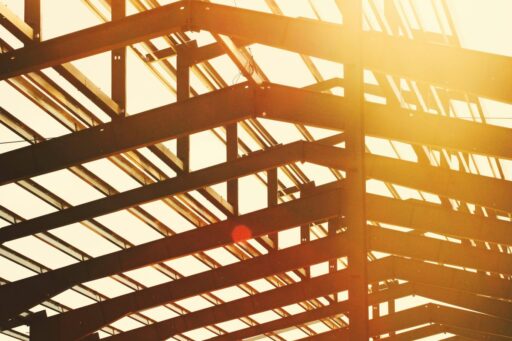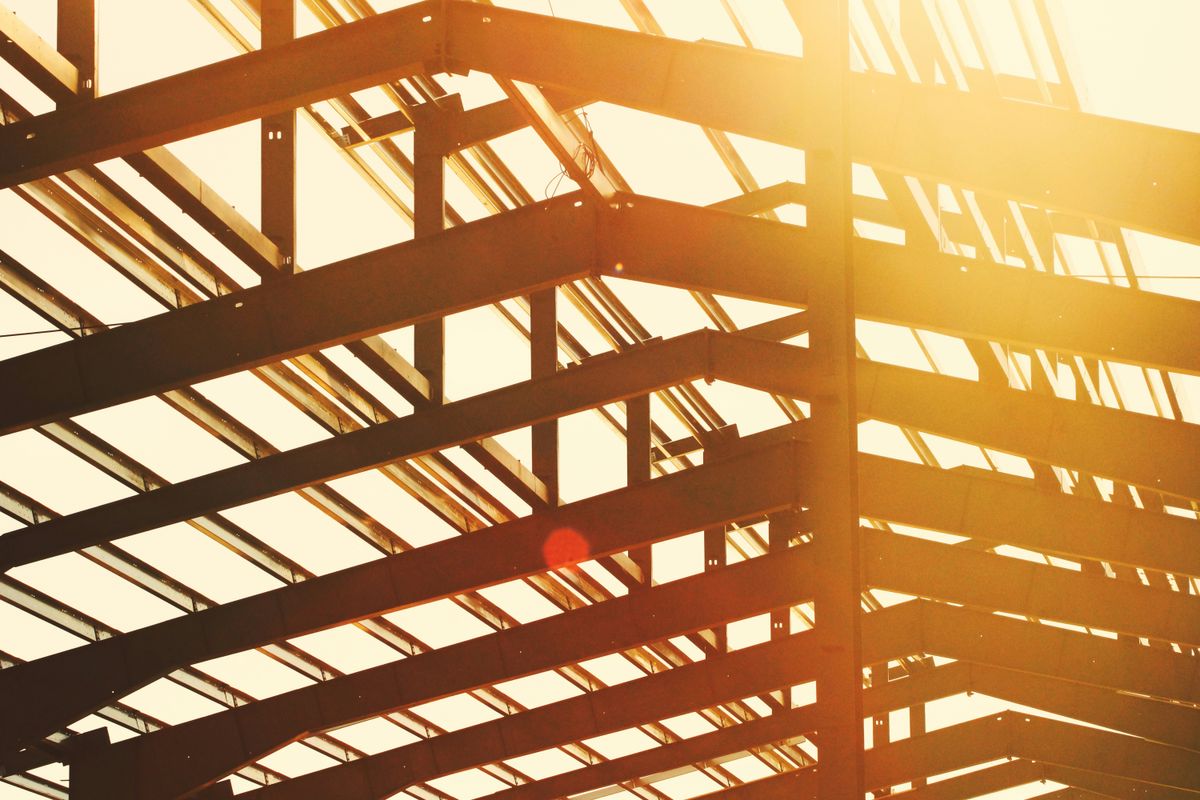Embarking on the construction of your dream home is an adventure filled with critical decisions and detailed processes. At the heart of this journey is the framing phase, where skilled contractors meticulously craft the structural backbone of your future residence. This article delves into the world of residential framing contractors, exploring the essential steps and considerations that ensure your home is not only a reflection of your vision but also a bastion of safety and durability.
Key Takeaways
- Residential framing contractors play a vital role in constructing the durable skeleton that supports the entirety of your home, ensuring stability and longevity.
- The framing process involves the precise assembly of key structural components such as studs, joists, beams, and trusses, which are integral to the building’s integrity.
- Collaborative design services offered by framing contractors enable homeowners to tailor their living spaces for both aesthetic appeal and functional efficiency.
- Truss installation is a critical aspect of roof construction, requiring careful design and installation to guarantee the durability and stability of the roofing system.
- Selecting high-quality materials for framing is crucial for the structural integrity of the home, balancing cost with performance to achieve the best outcome.
Understanding the Framing Process

The Role of Framing in Construction
Framing in construction is the process of constructing the skeletal structure that serves as the backbone of a building. This framework, typically made of materials like wood or steel, is fundamental in shaping the building’s form and providing support for walls, floors, and roofs. The precision of the framing phase is paramount, as it determines the stability, strength, and integrity of the entire structure.
The success of framing hinges on meticulous precision and accuracy in measurements and assembly. It is during this phase that the building begins to take shape, with each structural component playing a critical role.
Framing involves various elements, each with a specific function:
- Studs provide the vertical support for walls.
- Joists form the horizontal structure for floors.
- Beams and columns offer additional support and bear loads.
- Rafters or trusses shape the roof and ensure its stability.
Understanding builders’ plans and blueprints is the starting point for framers, as these documents contain precise measurements and instructions essential for constructing a robust framework.
Key Structural Components and Their Functions
The assembly of a home’s framework is a complex interplay of various structural components, each with a specific role in ensuring the building’s stability and durability. Studs, joists, beams, and columns are the primary elements that form the skeleton of the house, supporting the loads and stresses it will encounter over time.
- Studs provide the vertical support for walls, holding up the structure and creating spaces for doors and windows.
- Joists are the horizontal elements that support floors and ceilings, distributing weight evenly across the space.
- Beams are the robust horizontal components that carry the load from the floors and roofs to the columns or walls.
- Columns are the vertical pillars that transfer the load from beams to the foundation, anchoring the structure firmly to the ground.
Precision in the installation of these components is paramount. A misaligned beam or an improperly installed joist can lead to structural weaknesses, making the importance of skilled craftsmanship and rigorous quality control self-evident.
Wall framing is a critical step where vertical studs are methodically arranged to form the walls, which will support both the exterior and interior finishes. This stage sets the stage for subsequent installations, such as windows, doors, and insulation, making it a foundational aspect of the construction process.
The Importance of Precision in Framing
In the world of construction, precision in framing is not just a preference; it’s a necessity. The framing process lays the groundwork for the entire structure, and even the slightest deviation can lead to significant problems down the line. For instance, if walls are not perfectly plumb or floors are not level, the consequences can range from misaligned doors and windows to compromised structural integrity.
- 7. Precision and Accuracy: Essential for ensuring walls are plumb and floors are level.
- Structural Components: Includes studs, joists, beams, and columns.
- Wall Framing: Vertical studs form walls, supporting finishes and installations.
Attention to detail during the framing phase is crucial. Any oversight can result in structural issues that may not only affect the aesthetic appeal of your home but also its safety and longevity. Choosing a contractor with a proven track record of precision is vital. Look for a team that understands the importance of meticulous measurement and assembly, and one that uses quality materials and construction techniques to build a durable framework for your home.
Design Services: Bringing Your Vision to Life

The Intersection of Creativity and Functionality
When it comes to framing your dream home, the marriage of creativity and functionality is paramount. Our design services are tailored to blend these elements, ensuring that every space is not only aesthetically pleasing but also fully serves its intended purpose. The process begins with a deep dive into your lifestyle, ensuring that the design accommodates your daily routines and activities while leaving room for future growth and changes.
- Evaluate the flow of the design for daily life
- Optimize for natural light and energy efficiency
- Consider future expansions or lifestyle changes
Budget considerations are integral to the design process. We work with you to balance the creative aspects with practical financial planning, ensuring that the final design is both inspiring and economically viable. Our commitment to innovation means that we are always looking for ways to enhance the functionality of your space without compromising on style or quality.
Our design philosophy is simple: create spaces that resonate with your vision and stand the test of time. We take pride in our ability to deliver tailored solutions that reflect the uniqueness of each project, crafting not just buildings, but legacies.
Collaborative Design from Concept to Execution
The journey from a mere concept to a fully realized architectural execution is a collaborative effort that requires meticulous planning, open communication, and a shared vision. Our design services are tailored to bring your dream home to life, ensuring that every detail resonates with your personal style and functional needs.
- Comprehensive Design Review: Ensuring that all architectural and engineering plans are thoroughly vetted for potential issues.
- Code Compliance: Adhering to local building codes and regulations is paramount for a successful project.
- Material Selection: Choosing the right materials is crucial for both aesthetics and structural integrity.
The design phase is not just about aesthetics; it’s a strategic process that balances creativity with practicality, cost with quality, and innovation with compliance. It’s where we lay the groundwork for a home that’s not only beautiful but also livable and sustainable.
Our commitment to client satisfaction is reflected in our approach to design execution. We engage in a dynamic dialogue with our clients, ensuring that their input is integral to the design process. This collaborative approach results in spaces that are not only visually appealing but also perfectly suited to the client’s lifestyle and preferences.
Customizing Your Space for Optimal Living
Creating a living space that is tailored to your personal needs and preferences is essential for a comfortable and functional home. Define your style and preferences early in the design process to ensure that every room aligns with your vision for a dream home. Consider not only the aesthetics but also how the design will accommodate your daily activities and lifestyle.
Functionality should not be compromised for style. Practicality is key in a custom home, as it must meet the needs of your family size and daily routines. Optimize spaces for natural light, ventilation, and energy efficiency to enhance living quality.
- Evaluate the flow of the design in terms of daily routines.
- Consider future needs, such as potential expansions.
- Balance aesthetics with practical considerations.
Budget considerations are also crucial. Ensure that the chosen design aligns with your financial plan without sacrificing quality or functionality. Thoughtful planning and design can result in a space that not only looks stunning but also feels like a true sanctuary.
Truss Installation: The Pinnacle of Roof Framing

Understanding the Significance of Trusses
Trusses are the architectural marvels that form the backbone of modern roof construction. They are designed to distribute weight evenly and provide a stable structure that can span large areas without the need for internal support walls. This allows for more open and flexible interior spaces, making trusses a critical component in residential framing.
- Design: Trusses are engineered for specific load-bearing requirements, ensuring that each component contributes to overall stability.
- Strength: The interconnected triangles within a truss provide exceptional strength, capable of withstanding heavy loads and extreme weather conditions.
- Stability: The precise arrangement of truss elements results in a rigid structure that resists deformation over time.
Trusses not only support the roof but also contribute to the overall energy efficiency and acoustic performance of a home. By minimizing thermal bridging and providing space for insulation, they play a vital role in creating comfortable living environments.
Selecting the right truss for your project involves understanding the various types and their suitability for different architectural styles and load requirements. It’s essential to work with experienced framing contractors who can guide you through the selection process to ensure that your home is both beautiful and structurally sound.
The Process of Truss Design and Installation
The design and installation of roof trusses are critical steps in framing a home’s roof. The general contractor must ensure that the trusses are constructed to accommodate the home’s specific design needs, including any complex or sophisticated architectural features. The process begins with a detailed analysis of the roof’s dimensions and the anticipated loads it will bear. This information is used to engineer trusses that are both strong and efficient in their use of materials.
During installation, precision is paramount. Each truss must be carefully positioned and secured to maintain the integrity of the roof’s structure. The alignment of trusses is checked and rechecked to ensure that the entire system is level and true. This meticulous approach to installation helps prevent future issues such as sagging or structural weakness.
The successful installation of roof trusses sets the stage for the remaining construction phases, ultimately contributing to the durability and safety of the finished home.
To illustrate the importance of each step, consider the following sequence:
- Analysis of roof design and load requirements
- Engineering of trusses to meet specific needs
- Precise positioning and securing of each truss
- Verification of alignment and structural integrity
Ensuring Durability and Stability in Roof Construction
The construction of a roof truss is a critical phase in ensuring the longevity and safety of a home. It is not just about the assembly of beams and connectors; it’s about creating a structure that can withstand the test of time and the elements. To protect your roof truss, there are several factors to consider:
- Weatherproofing: Proper weatherproofing is essential. This includes the application of underlayment materials and flashing around roof penetrations to prevent water intrusion.
- Roof Structure: The strength of the underlying structure, such as rafters or trusses, is paramount for supporting the roofing materials and ensuring stability.
- Installation Process: Precision during installation is crucial. The strategic laying of roofing materials creates a weather-resistant barrier that enhances durability.
- Maintenance and Repairs: Regular maintenance, including inspections and timely repairs, is vital for preserving the integrity of the roof.
Ensuring that these aspects are meticulously addressed will contribute significantly to the durability and stability of your roof construction, safeguarding your home for years to come.
Navigating the Construction Phase with Confidence

From Foundation Walls to Finishing Touches
The construction of foundation walls marks a critical phase in the creation of your home’s foundation, where precision and attention to detail are paramount. Any oversight or flaw can lead to significant issues, potentially resulting in structural failure. As the walls rise, the vision of your home’s solid backbone takes shape, promising enduring strength and stability for generations.
From laying the groundwork to putting the finishing touches on your new home, we cover everything you need to know. This journey through the various phases of construction is filled with key decisions and expert tips to empower you to make informed choices.
In homes with a perimeter foundation design, the foundation walls outline the outermost boundary, supporting the entire structure’s load and transferring it to the footers and the ground. Here’s a quick overview of the construction phase:
- Laying the foundation and ensuring proper load distribution
- Erecting structural frames and securing them with precision
- Installing essential systems such as plumbing and electrical
- Applying interior and exterior finishes that bring your vision to life
As we meticulously construct foundation walls for our clients, we envision the solid backbone forming beneath the surface — a testament to our commitment to every home’s enduring strength.
Managing Budget and Timelines Effectively
Effective management of budget and timelines is crucial for the success of any construction project. Setting realistic budget goals is the first step towards financial control. Assess your finances thoroughly, considering savings, income, and potential funding sources. This foresight is essential for a smooth construction process.
Allocating funds effectively is just as important. Prioritize essential construction elements, balancing the need for quality materials and skilled labor. A smart allocation strategy maximizes resources while minimizing unnecessary expenses.
Contingency planning cannot be overlooked. Allocate a portion of your budget (typically 10-15%) for unforeseen circumstances. Regularly review and adjust this fund to respond to any potential risks or challenges that may arise, such as weather delays or unexpected site conditions.
In the realm of construction, timelines are as pivotal as budgets. Most project managers utilize sophisticated scheduling tools like Primavera P6, Procore, monday.com, and Smartsheet to create comprehensive timelines. These tools help in tracking progress and ensuring that each phase of construction aligns with the overall project schedule.
Addressing Challenges and Ensuring Quality Control
In the journey of constructing a home, addressing challenges and ensuring quality control are pivotal to the project’s success. Adequate quality control procedures not only improve efficiency but also set a standard of excellence that permeates the entire organization.
Quality assurance in house construction is a systematic endeavor, encompassing everything from design and planning to the final touches. It’s about having a skilled workforce, conducting regular quality control inspections, and ensuring that all construction processes meet the highest standards. Here’s a brief overview of the key considerations:
- Skilled Workforce: Ensuring that all construction professionals are trained and competent.
- Regular Inspections: Verifying adherence to plans and quality standards at critical stages.
- Quality Testing: Conducting necessary material and structural integrity tests.
- Third-Party Inspections: Obtaining unbiased evaluations from independent inspectors.
It is essential to maintain comprehensive project records and develop accurate as-built drawings. These documents are invaluable for future reference and can significantly aid in maintaining the integrity of the construction over time.
Finally, post-construction evaluation is crucial. It’s a process that assesses the quality and durability of the construction, ensuring that the home is built to last and providing peace of mind to the homeowners.
Material Matters: Selecting Quality for Your Home’s Framework

The Impact of Material Choice on Structural Integrity
The choice of materials used in framing your home is critical to its overall structural integrity. High-quality materials can significantly reduce the risk of future structural issues, ensuring that your home remains safe and sound for years to come.
When selecting materials, it’s essential to consider their strength, durability, and resistance to environmental factors. For instance, the type of wood used for beams and columns must be able to support the weight of the home without warping or deteriorating over time. Similarly, the materials chosen for the roof structure, such as trusses and rafters, must be capable of withstanding heavy loads and harsh weather conditions.
The right material selection not only provides a sturdy foundation for your home but also contributes to its longevity and value. It’s a decision that should be made with careful consideration and expert advice.
Here is a list of key considerations for material selection:
- Quality Materials: Ensure the use of materials that meet or exceed industry standards.
- Supplier Assessment: Choose suppliers with a proven track record for reliability.
- Environmental Resistance: Select materials that are suited to the local climate and environmental conditions.
- Load-bearing Capacity: Verify that materials can handle the expected structural loads without compromise.
Balancing Cost and Quality in Material Selection
When selecting materials for the framing of your home, the balance between cost and quality is paramount. High-quality materials are crucial for the structural integrity of your home, but they often come with a higher price tag. To optimize your budget without compromising on quality, consider the following steps:
- Research cost-effective yet high-quality materials.
- Assess and choose reputable suppliers for reliability.
- Seek competitive bids from contractors.
- Prioritize essential elements of construction.
Smart allocation of funds is key to maximizing resources while ensuring the durability and safety of your home’s framework.
Remember, the cheapest options may lead to increased costs down the line due to maintenance and potential structural issues. Conversely, the most expensive materials may not always guarantee the best value for your investment. It’s about finding the right balance that suits your budget and quality expectations.
Innovative Materials and Techniques in Modern Framing
The construction industry is witnessing a revolution with the introduction of innovative materials and techniques that are reshaping the future of residential framing. These advancements not only enhance the structural integrity of homes but also offer improved sustainability and efficiency.
- Cross-Laminated Timber (CLT): A multi-layered wood panel product that provides exceptional strength and stability.
- Insulated Concrete Forms (ICF): Blocks that stack to form the structure’s walls, filled with concrete for a robust and insulated envelope.
- Steel Framing Systems: Offering precision and durability, steel framing is gaining popularity for its resistance to fire, pests, and decay.
Embracing these modern materials and methods can lead to a significant improvement in the quality and longevity of residential structures.
The market is also exploring materials that are not only structurally sound but environmentally friendly. For instance, the use of recycled materials in framing components is gaining traction, aligning with the global push towards sustainability. As we continue to innovate, the framing process becomes more efficient, reducing waste and energy consumption during construction.
Conclusion
In conclusion, residential framing contractors play an indispensable role in transforming your vision of a dream home into a robust reality. The intricate process of framing forms the very skeleton of your abode, ensuring that every wall, floor, and roof is precisely aligned and structurally sound. From the initial design to the meticulous construction of foundation walls, the expertise of skilled craftsmen is evident. As we’ve explored the various phases of construction, the importance of precision, quality materials, and expert techniques cannot be overstated. Whether it’s the assembly of structural components or the installation of trusses, each step is critical to crafting a home that is not only aesthetically pleasing but also enduring and safe. As you embark on the journey of building your home, remember that the strength and stability of your future memories begin with the quality of its framing.
Frequently Asked Questions
What is the role of framing in construction?
Framing in construction refers to the skeletal structure that forms the backbone of a building, providing essential support for walls, floors, and roofs. It shapes the overall structure and ensures the stability, strength, and integrity of the building.
What are the key structural components used in framing?
Key structural components in framing include studs, joists, beams, columns, and trusses. These elements work together to create a framework that can withstand the loads and stresses placed upon the building.
Why is precision important in the framing process?
Precision and accuracy are crucial in the framing process to ensure that walls are plumb, floors are level, and the overall structure can safely support the intended loads. Any deviation can lead to structural issues or failure.
How does truss installation contribute to roof construction?
Truss installation is a critical part of roof construction as it provides a pre-engineered framework for the roof, ensuring durability and stability. Trusses are designed to distribute weight evenly and withstand various environmental stresses.
What should be considered when selecting materials for framing?
When selecting materials for framing, it’s important to consider the impact on structural integrity, balance cost with quality, and explore innovative materials and techniques that can enhance the framework’s performance and longevity.
What are the steps involved in the construction phase of framing?
The construction phase of framing involves the assembly of structural components such as wall framing, floor framing, and roof framing. It includes precise measurement, cutting, and assembly to ensure the structure’s safety and integrity.





